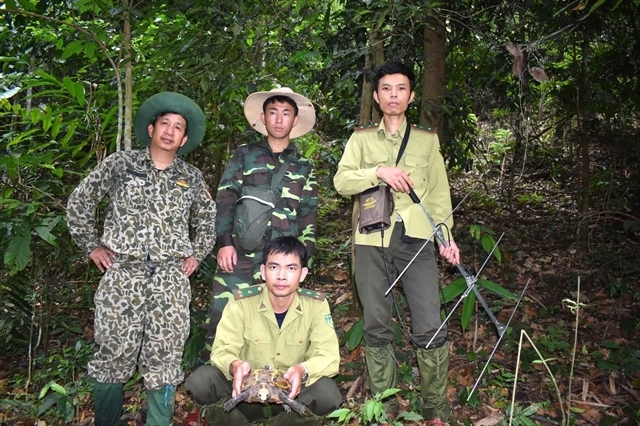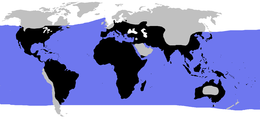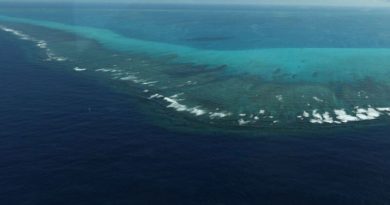SCI-TECH | CHENOLOGY- Rare turtle species discovered at Pù Hu Nature Reserve

Covering a total area of nearly 28,000 hectares, Pù Hu Nature Reserve has a rich biodiversity with over 500 plants and over 266 animals, including nearly 30 rare species.The Management Board of Pù Hu Nature Reserve in Quan Hóa District in the central province of Thanh Hóa have discovered two rare turtle species, the impressed tortoise (Manouria impressa) and big-headed turtle (Platysternon megacephalum).
The discovery is made as part the ‘Investigation and assessment of the current distribution and conservation of big-headed turtles and impressed tortoises in Pù Hu Nature Reserve’ project.
It aims to sustainably protect the ecosystems of Pù Hu forests, including protecting and maintaining the existence of turtle species.
 |
| Members of the Management Board of Pù Hu Nature Reserve with an impressed tortoise. |
Impressed tortoises belong to the tortoise family Testudinidae, order Testudinata. They are found in mountainous forest areas in Southeast Asia, mainly in Myanmar, southern China, Thailand, Laos, Việt Nam, Cambodia, Malaysia and northeast India. The species has a golden brown shell and skin. An adult could have a maximum carapace length of 35cm.
 |
| Impressed tortoises have golden brown shells and skin. |
They usually take shelter in ditches or wet valleys at 1,500m. Their diet includes fruits, grass and mushrooms.
 |
| The big-headed turtles have large unretractable heads and long tails. |
The big-headed turtle (Platysternon megacephalum) is a turtle in the family Platygastridae from Southeast Asia and southern China. They have large unretractable heads and long tails. The species mainly live in streams in the forest and seek food at dusk or night. Their main food is small fish, molluscs, crabs, earthworms and other invertebrates.
 |
| Forest rangers check the growth rate of an impressed tortoise at Pù Hu Nature Reserve. |
The management board of Pù Hu Nature Reserve are assessing the current population status and morphological and behavioural characteristics of these two turtle species to build a species distribution map.
The unit also trained staff and local people to raise awareness about conserving turtle species in reserve.
Covering a total area of nearly 28,000 hectares, Pù Hu Nature Reserve has a rich biodiversity with over 500 plants and over 266 animals, including nearly 30 rare species. — VNS


 Memento Maxima Digital Marketing @
Memento Maxima Digital Marketing @

 Ads by: Memento Maxima Digital Marketing
Ads by: Memento Maxima Digital Marketing






